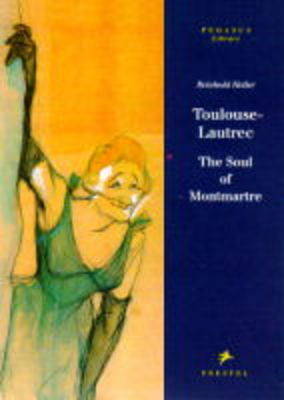Pegasus
1 total work
Henri de Toulouse-Lautrec, more than any other artist, epitomizes the spirit of Montmartre, one of the most colourful and vibrant quarters of Paris. Physically disabled since childhood, he was unable to participate in the typical pursuits of the aristocracy from which he came, preferring to find solace and inspiration in the brothels, theatres and cafes of Montmartre. A misfit among misfits, he produced countless paintings, drawings, and lithographs of the actresses, dancers and prostitutes he encountered. This text analyzes the artist's critical realism, and the methods he used to produce his famous paintings and drawings - and the posters for the cabarets, theatres and dance halls of Montmartre. Toulouse-Lautrec particularly favoured colour lithography, producing pictures of intensity and strength in this new medium.
